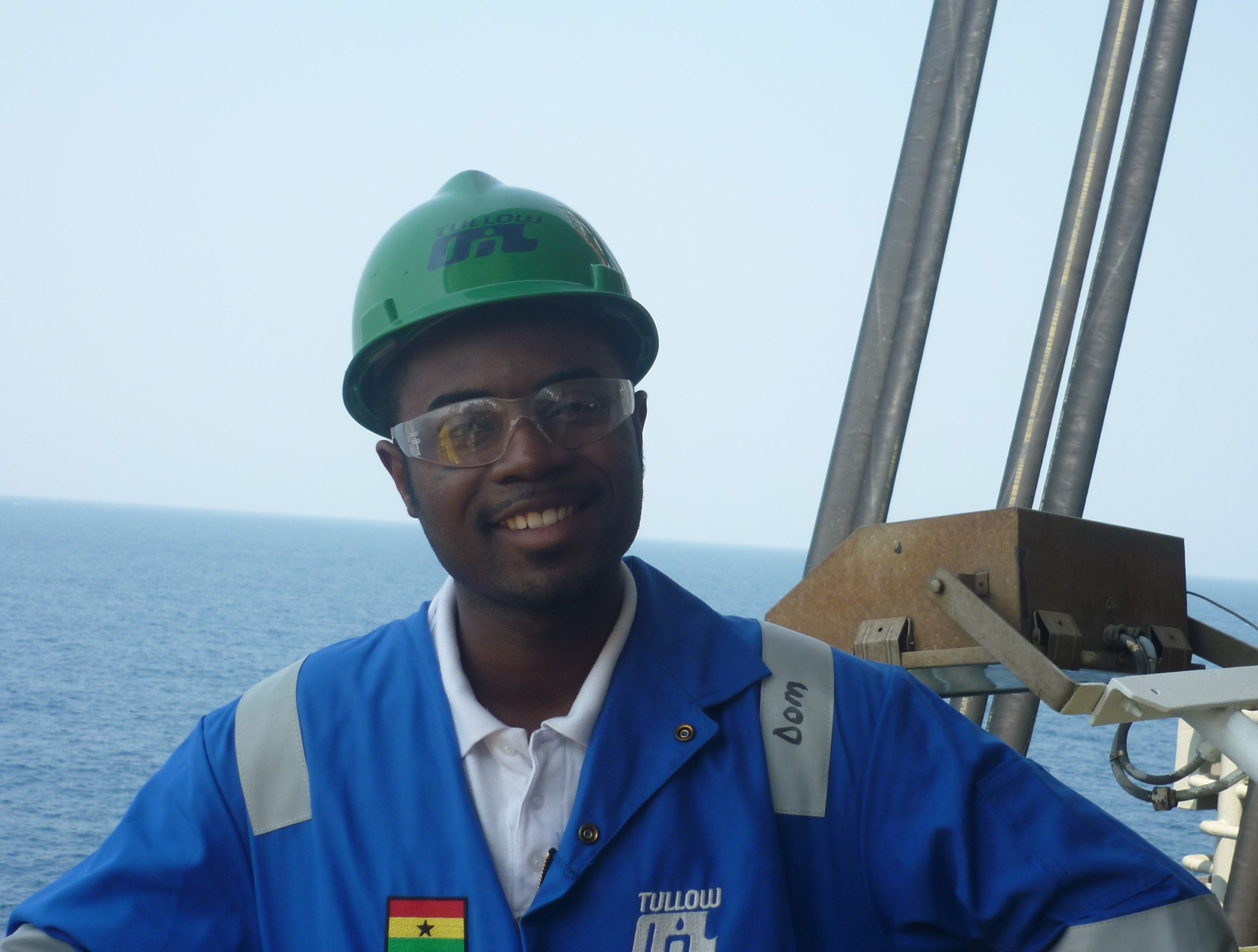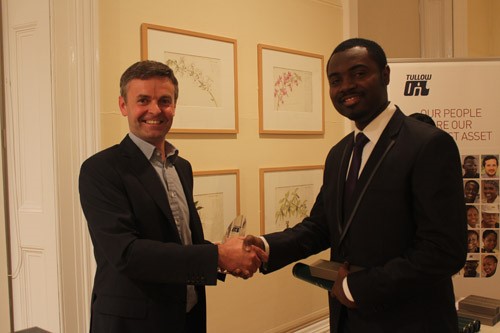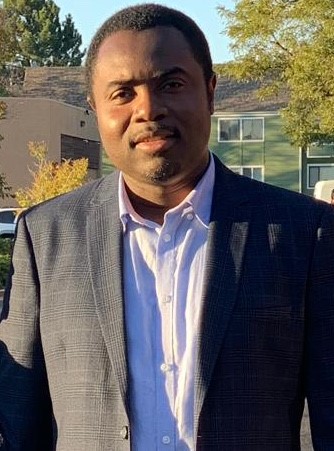Due to the recent fall in oil prices that hit the oil and gas industry, deepwater oil and gas operators around the globe were forced to come up with innovative solutions to minimise development Capital Expenditure (CAPEX) and make deepwater oil and gas development projects economically feasible.
One solution proposed by Roger Addy was to design a well that targeted multiple reservoir intervals utilising existing subsea infrastructure while reducing well count for the development.
Threading a well between already installed subsea manifold and multiple reservoir intervals required a 3-dimensional ‘cork screw’ well trajectory which was deemed to be riddled with many drilling risks amidst a narrow drilling window. Not only was this well designed and executed flawlessly, but it also achieved best in class top quartile drilling performance when benchmarked with similar deepwater wells drilled by major operators in the Americas and Europe.
This innovative and revolutionary solution has certainly pushed the boundaries of what the deepwater drilling fraternity thought could be achieved in terms of performance with conventional drilling technology. This achievement has made Roger a toast of the local and international oil and gas community. In this conversation, he shares his inspiring story.
Upbringing & education
I had my primary and junior secondary school education at the St George’s International School in Kumasi. I later proceeded to Opoku Ware School for my Senior Secondary School education and subsequently the Kwame Nkrumah University of Science and Technology (KNUST) where I pursued a Bachelor’s degree in Civil Engineering, graduating in 2007.
I have since obtained several industry accredited certifications in well engineering and operations and pursued an MBA in Petroleum Economics and Finance, Coventry University, UK to gain a broader understanding of the petroleum business. I am a Chartered Engineer (CEng) with the UK Engineering Council, a member of the UK Energy Institute and the Society of Petroleum Engineers. I am also the recipient of the 2020 SPE Africa Drilling Engineering Award.
Why engineering?
Interestingly, all through primary and junior high schools, I thought I wanted to be a medical doctor. I guess most of the role models in my life at the time were biased towards medicine.
Working on an offshore rigIt was during my second year in senior high school that I made a conscious effort to focus on Mathematics and Physics to ensure I passed those subjects in the SSCE. I then realised I enjoyed learning those subjects compared to Biology and Chemistry that I had been spending most of my time studying in secondary school. It was not surprising that I had exceptionally good grades in Mathematics and Physics when my SSCE results were released. As a result, I opted to pursue Engineering.
A walk through career
I started my engineering career as a Civil Engineer designing and supervising the construction of reinforced concrete structures mainly for residential and commercial buildings. I did that for about two years and then decided to transition into the oilfield as a drilling engineer with Tullow Oil; at the time, they were tasked with developing the Jubilee Oil Fields in Ghana.
Along with about 1,500 other applicants, I went through a rigorous screening and an assessment centre selection process consisting of a series of aptitude tests, interviews and group exercises. Because of my outstanding performance in the recruitment process, I was selected as one of the top three indigenous Ghanaian engineers in the country at the time to pursue a top tier engineering career in Ghana’s emerging oil industry.
Transitioning into well engineering was somewhat not complicated considering my background as a civil engineer in the building construction industry. Well engineering mainly involves the design and construction of oil wells and so many of the civil engineering principles were easily transferable. I however had to initially attend a series of oil industry related courses and workshops in Aberdeen, London and Houston to re-orient my focus and understanding of some of the basic concepts in well design and construction.
I returned to Ghana to commence on-the-job training on the offshore drilling rigs, developing in-depth understanding into rig operations as it relates to oil drilling, well completions and well testing. This was interspersed with office-based well engineering projects and after two years I sat and passed the International Well Control Forum (IWCF) Examinations with flying colours.

I then earned my promotion to the position of a Wellsite Drilling Engineer/Night Drilling Supervisor. I was primarily responsible for the day-to day supervision and reporting of wellsite drilling operations on complex oil wells in water depths of between 1,000m to 2,000m using 5th and 6th Generation deepwater mobile drilling rigs.
I remember a time when we had some stuck pipe incidents which resulted in sidetracks on two of our extended reach wells we drilled and when in 2011, the drilling team were again challenged to drill another ERD well. This well was very critical to maintaining production plateau and hence there was a strong drive to implement novel drilling practices to avoid any trainwrecks, as the drilling practices adopted on those two previous wells had not worked as expected.
Through innovative thought and strategy, my solution was an approach which was not conventional. Instead of relying solely on drillstring up-down weights plotted manually on a ‘broomstick’ plot to determine hole cleanliness, I also recommended that we trend the volume of drilled cuttings returning over the shakers to validate the broomstick plot which was prone to errors especially because no two drillers are likely to record this data in the same way.
By implementing this drilling practice under my supervision at the wellsite, the well was drilled trouble free to Total Depth of ~5,000m in record time. The drilling assembly was recovered out of hole without issues and the 9-5/8 casing was installed without any incident. To date, this well continues to be one of the most prolific oil producers in the field contributing significant volumes to Ghana’s oil production. The operational success of this well was shared with industry players in Ghana and globally via industry related conferences and workshops.
In 2012, I was transferred to Nairobi, Kenya where I was faced with the challenge of drilling a wild cat exploratory onshore oil well in the remote semi-desert location with limited facilities amidst temperatures over 40 degrees Celsius. This assignment offered me exposure to remote onshore drilling operational challenges associated with drilling hard tectonic formations. It also afforded me the opportunity to implement some offshore safety and drilling practices that helped to deliver the well successfully.
I subsequently returned to Accra in 2013 and resumed work as a Drilling Planning Engineer where I was confronted with the challenge of engineering design, operational planning and programming of complex 3-dimensional and extended reach deepwater oil wells reaching depths of between 4,000m to 6,000m. One outstanding achievement during this period was designing and planning the first horizontal well in Ghana where we deployed intelligent and supplicated geo-steering drilling tools to place the well within a thin reservoir interval and using special water-based drill-in fluids to minimise reservoir damage and facilitate open hole gravel-pack completion.
The well reached a total depth of ~5000m in 8-1/2’’ open hole achieving best in class drilling performance when benchmarked globally against similar wells drilled by major operators such as BP, Shell and Total at the time. Bear in mind, deepwater wells are very expensive to drill costing between US$20m to US$40m, hence any time saving constitutes a significant cost savings.
In 2014, I was transferred to London, UK where I was again faced with a new challenge of developing field conceptual designs, performing front end engineering work and cost estimates for the Greater Jubilee Full Field development project, which consisted of 14 wells in the mid case and 24 wells in the high case project economics evaluation.
Annular Pressure Build (APB) became a hot topic in the industry in the late 1990s following a well collapse incident that happened in the Marlin field in the U.S Gulf of Mexico. Although I had learnt about APB in the past, it was during this assignment that I researched deeply and widely into the challenge posed by Annular Pressure Build-up (APB) in deepwater well construction worldwide and how to mitigate against this problem in the Greater Jubilee Full Field Development (GJFFD) project.
Following on from the oil price crush in 2014, many deepwater oil operators around the world were challenged to look for opportunities to reduce project CAPEX and one such case was when Tullow and its JV partners were looking to re-use a 7-year-old an existing appraisal well as a gas producer as part of the GJFFD I could use Well CAT casing design application to model various operational phases of the well and along with temperature profiles to establish that the well would collapse within the first 10 days of being put on production. This was due to a 10-3/4’’ casing pup joint that was installed as part of the production casing string. To make the well re-useable, I recommended for the 10-3/4’’casing pup joint be cut and replaced with high strength casing patch that would be able to withstand the APB collapse.

The results were very revealing piquing the interest of not only Tullow’s Management, but also our Joint Venture Partners like U.S based Kosmos Energy, Anadarko Petroleum and the Ghana National Petroleum Company (GNPC). The Petroleum Commission of Ghana also became interested in understanding more about APB and how to mitigate it. This culminated in the first ever well attended SPE Well Integrity Workshop in Accra, where I made a presentation to industry experts in Ghana and from around the globe on the phenomenon of APB, its effects on subsea wells and solutions.
I am currently working as a Senior Drilling Engineer designing, planning and providing operational support for wellsite operations. Due to the recent fall in oil prices that hit the oil and gas industry, deepwater oil and gas operators around the globe are forced to come up with innovative solutions to minimise development CAPEX (full meaning needed) and make deepwater oil development projects economically feasible. One such solution I proposed was to design a well that targeted multiple reservoir intervals utilising existing subsea infrastructure while reducing well count for the development.
Threading a well between already installed subsea manifold and multiple reservoir intervals required a 3-dimensional ‘cork screw’ well trajectory. This well trajectory by any measure was considered excessively riddled with many drilling risks amidst a narrow drilling window. Through careful and thorough upfront engineering and planning work, not only was drilling operations executed flawlessly but it also achieved best in class top quartile drilling performance when benchmarked with similar deepwater wells drilled by major operators in the Americas and Europe.
I also worked briefly in Guyana and Trinidad in South America as the drilling technical lead for our well operations readiness review where I was responsible for auditing all the elements in our well delivery process to ensure that they have been fully complied with prior to commencement of exploration drilling operations.
Contentment & satisfaction for work well done
I have been called upon to review well designs and APB mitigation options being proposed by other operators in Ghana. Within Tullow, I have reviewed casing designs for our operations in other international locations. I have made presentations through platforms like the SPE to share the successes of our APB mitigation story in Ghana with other stakeholders concerned about well integrity. It feels good to know that my expertise is valuable to both my employer and the wider oil and gas industry.
The abandoned and suspended well monitoring process which I was involved in developing for Tullow in Ghana to prevent environmental leaks was shared with industry experts by way of an SPE conference paper and presentation. This well monitoring process has since been endorsed by industry experts in Ghana.
Message for engineering students in Ghana and Africa
As I said, I studied Civil Engineering but currently work in the oil and gas industry as a drilling engineer. The fundamental engineering principles does not change regardless of which engineering discipline you decide to work in. Engineering training aims to test your ability to think analytically and solve problems.
Once you excel in this endeavour, you should be able to fit into any other engineering field in a short time. In my career, I have even met anthropologists and geologists who have been able to transition into drilling engineering and are doing well. Don’t limit yourself to what discipline you studied in school. The sky is your springboard!










